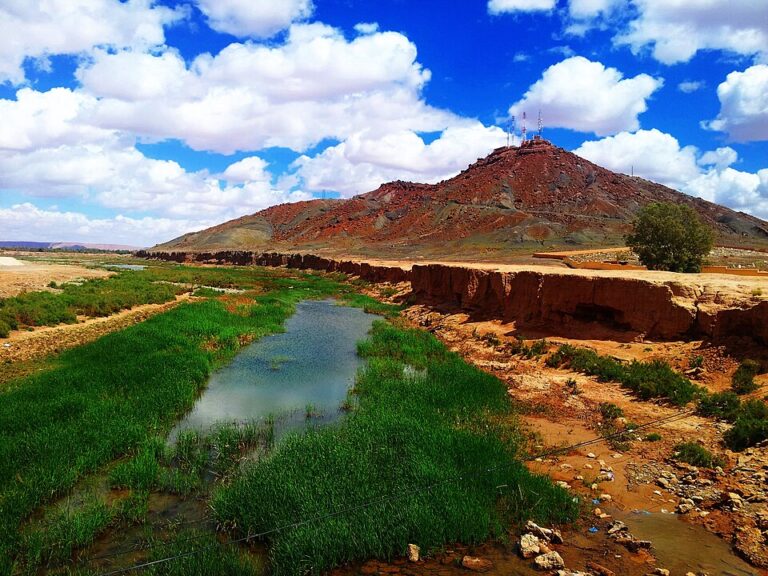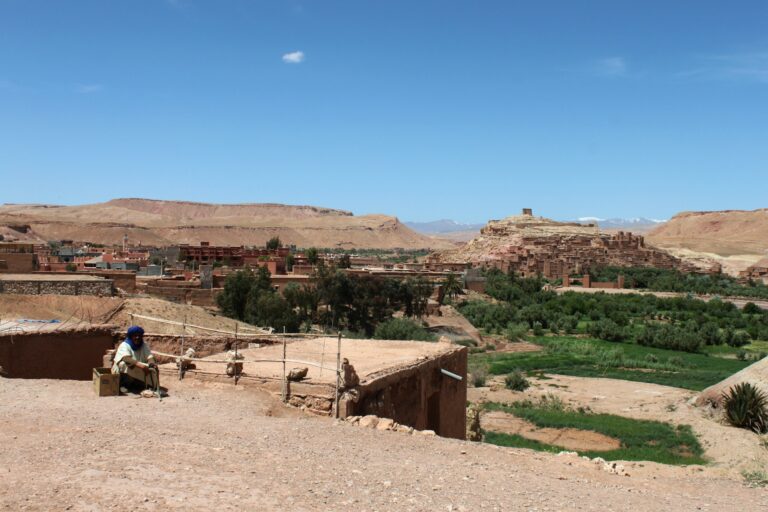
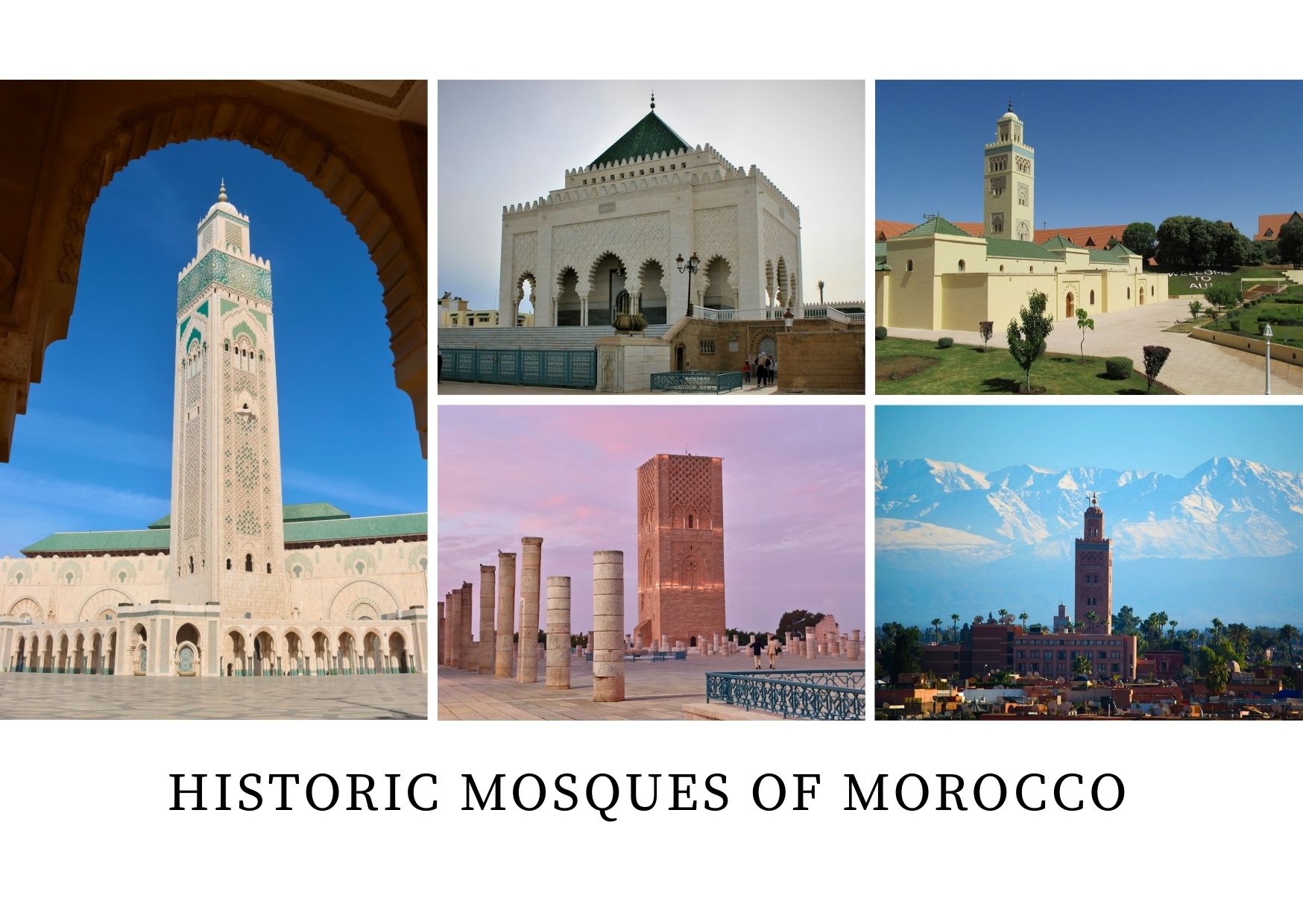
From the towering minarets of Marrakech to the timeless serenity of Fes, the Historic Mosques of Morocco offer travelers more than spiritual sanctuaries — they open a window into centuries of artistry, community, and faith. In this blog post, we’ll guide you through Morocco’s most iconic mosques, share travel tips, and inspire your next journey through this vibrant and culturally rich country.
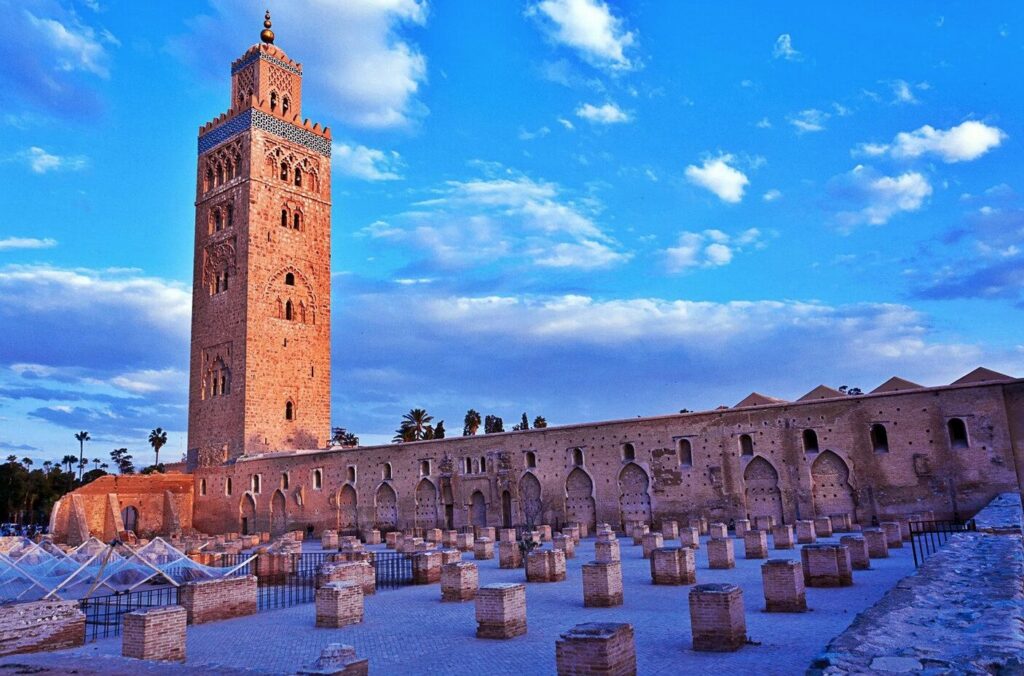
A Legacy of Faith and Artistry
Morocco’s Spiritual and Architectural Heritage
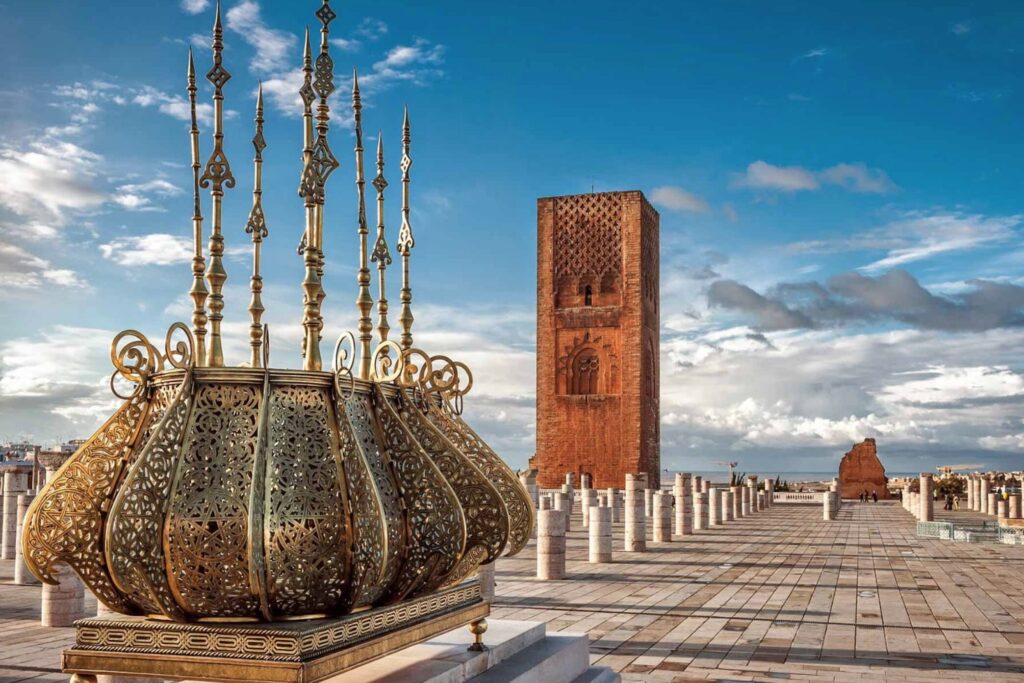
Morocco’s mosques are far more than places of worship. They’re masterpieces of Islamic architecture, showcasing a blend of Andalusian, Berber, and Arab influences. Whether you’re an architecture enthusiast, a spiritual traveler, or a curious tourist, visiting these mosques is a must to understand Morocco’s soul.
Islam was introduced to Morocco in the 7th century, and with it came a flourishing of religious and cultural institutions. Many of the mosques you see today — especially in cities like Fes, Marrakech, and Rabat — are centuries old and remain active centers of worship, education, and community.
Learn more about Moroccan culture on Wikipedia
Must-See Mosques Across Morocco
1. Koutoubia Mosque – Marrakech

Standing proudly near Jemaa el-Fnaa, the Koutoubia Mosque is one of the most iconic landmarks in Marrakech. Built in the 12th century, it boasts a 77-meter minaret — the tallest structure in the city. Non-Muslims cannot enter the mosque itself, but its beauty can be appreciated from outside, especially at sunset when it glows golden against the sky.
2. Hassan II Mosque – Casablanca
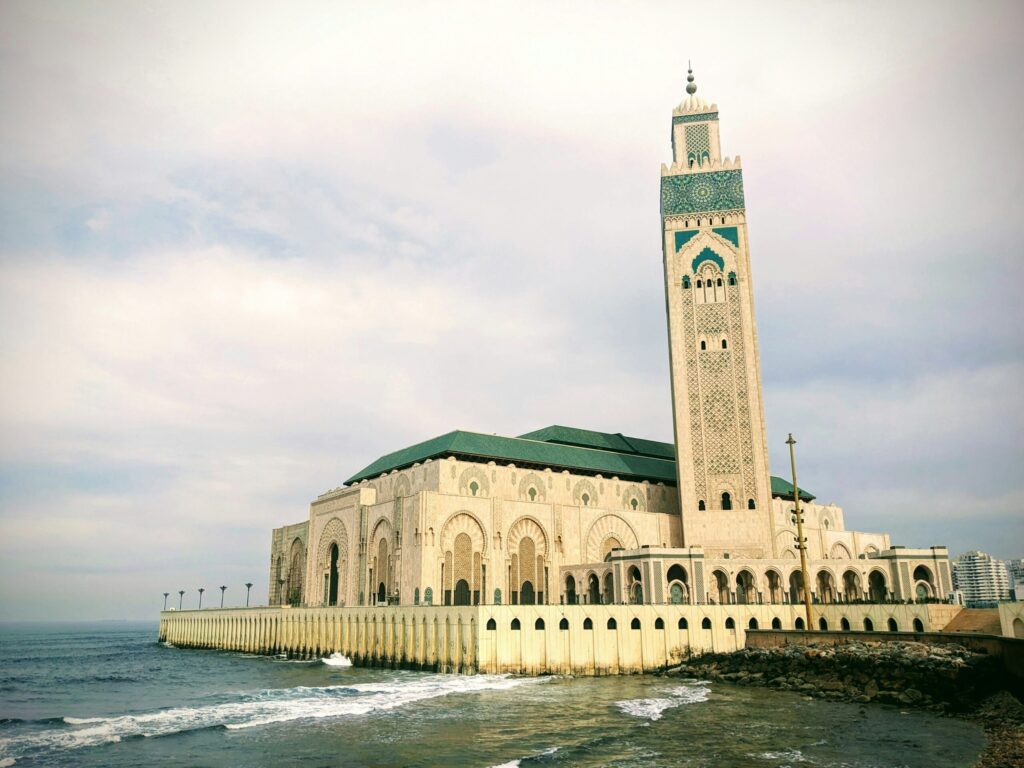
A marvel of modern Islamic architecture, the Hassan II Mosque is the largest in Morocco and the seventh-largest in the world. Completed in 1993, it sits partly over the Atlantic Ocean and features intricate marble work, zellige tile mosaics, and a retractable roof. Unlike many mosques in Morocco, this one is open to non-Muslim visitors through guided tours.
Read more about the Hassan II Mosque on Wikipedia
3. Al Quaraouiyine Mosque – Fes
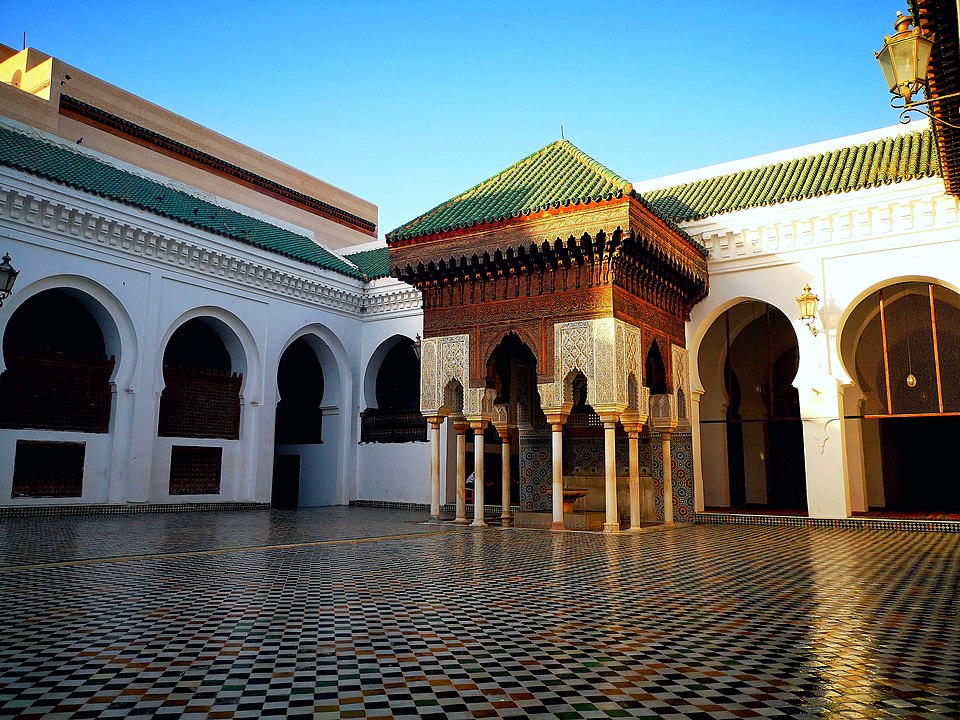
Founded in 859, Al Quaraouiyine is considered one of the oldest universities in the world. The mosque and university complex is located in the heart of the Fes el-Bali medina, and while it is not open to non-Muslims, its green-tiled roof and scholarly legacy can be admired from surrounding rooftops and through local stories.
4. Great Mosque of Taza – Taza
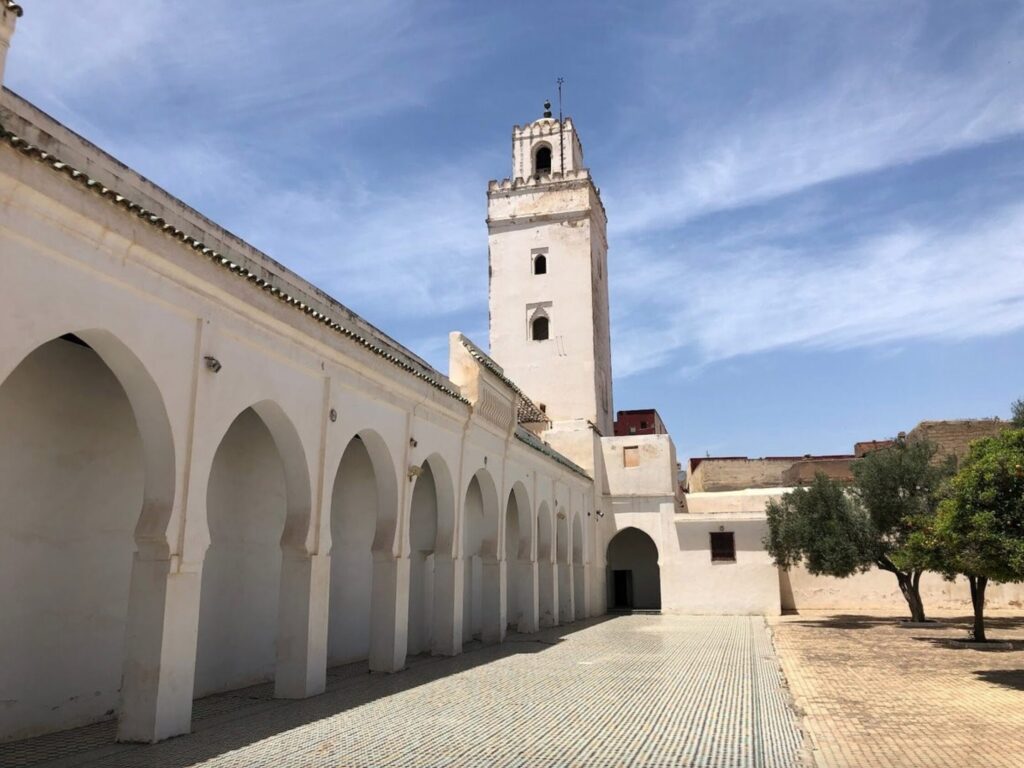
Less known but deeply significant, the Great Mosque of Taza dates back to the 12th century. Taza is a smaller, often overlooked city, but its mosque reflects the early Almohad architectural style and is one of the most authentic examples of medieval Moroccan mosque design.
5. Tinmel Mosque – High Atlas Mountains
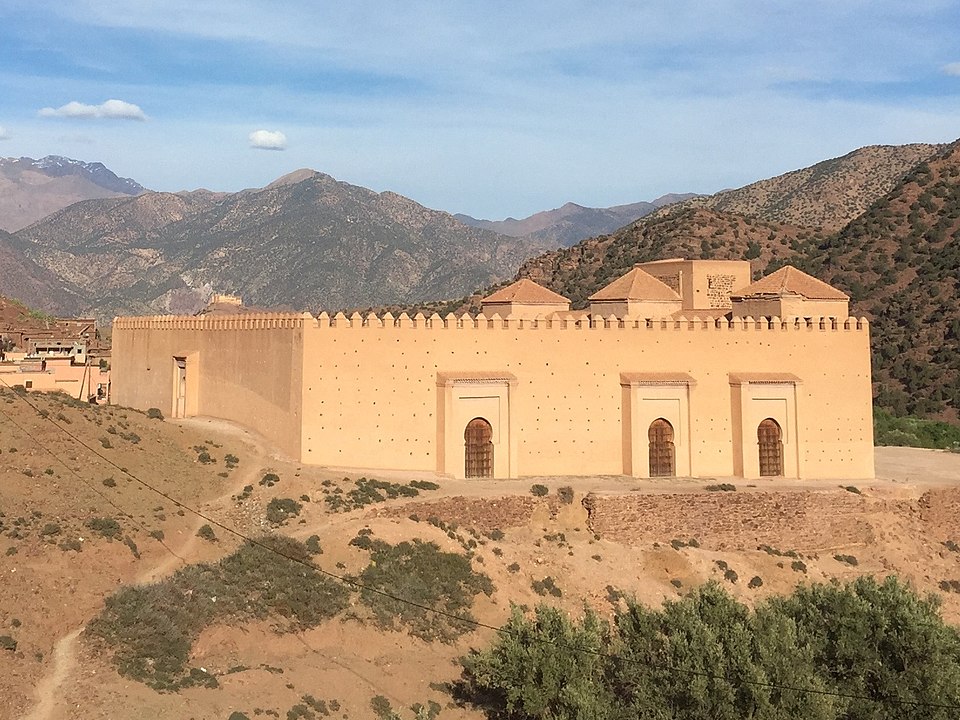
Currently under restoration, the Tinmel Mosque is a national treasure nestled in the Atlas Mountains. It was built in the 12th century and was once a spiritual and political hub for the Almohad dynasty. While access may be limited during restoration, its remote beauty and historical importance make it worth the detour.
Travel Tips and Cultural Insights
Respect and Awareness
Visiting the Historic Mosques of Morocco requires sensitivity and cultural respect. While many mosques are closed to non-Muslims, their architecture and surroundings can be deeply enjoyed from the exterior.
- Dress modestly, especially when visiting religious sites.
- Remove your shoes if you are allowed inside.
- Avoid visiting during prayer times, particularly the Friday midday prayer.
- Use a local guide to learn about mosque history and significance from the outside.
Best Times to Visit
Spring (March–May) and Fall (September–November) offer the most comfortable temperatures for exploring Moroccan cities and mosques.
Photography Etiquette
Always ask before taking photos, especially if people are in the frame. Some sites may prohibit photography inside or during services.
Traveler Stories: What Visitors Say
A Photographer’s Perspective – Sarah, from Spain
“The Hassan II Mosque left me speechless. I joined the morning tour and couldn’t believe how intricate the ceiling was — it looked like a starry sky. Even my camera didn’t do it justice.”
Cultural Explorer – Jamal, from the UK
“I walked the medina of Fes with a local guide who led me to a rooftop café. From there, I could see the green tiles of Al Quaraouiyine and hear the call to prayer echo through the alleys. It was unforgettable.”
Off-the-Beaten-Path Adventure – Lina, from Canada
“I hiked to the Tinmel Mosque during my trip through the Atlas Mountains. It felt like discovering a hidden chapter of Moroccan history — peaceful and powerful.”
When and Where to Go Next
Seasonal Highlights
- Ramadan: While tourists are welcome, note that many restaurants may be closed during the day, and the atmosphere becomes more spiritual and reflective.
- Eid Holidays: An opportunity to witness joyful community gatherings (from a respectful distance).
- Festival of Fes: Combine a visit to Al Quaraouiyine with the Fes Festival of World Sacred Music in June.
City Combinations
- Marrakech + Casablanca: Perfect if you’re short on time but want to experience both old and new.
- Fes + Taza: Great for deeper historical context and smaller crowds.
- Atlas Mountains + Tinmel: Ideal for adventure and solitude seekers.
Frequently Asked Questions
Are non-Muslims allowed to visit mosques in Morocco?
Most mosques in Morocco are not open to non-Muslims. However, exceptions include the Hassan II Mosque in Casablanca, which offers guided tours.
What’s the best mosque to visit for photography?
The Hassan II Mosque is the most photogenic, with access to its interior and exterior, especially during sunrise or sunset.
Can I visit mosques during Ramadan?
Yes, but be mindful of prayer times and local customs. Avoid eating or drinking in public during daylight hours.
Is there a dress code for visiting mosques?
Yes. Both men and women should dress modestly — shoulders and knees covered. Women may be asked to wear a headscarf.
Are there any mosque tours in English?
Yes, especially in major cities. The Hassan II Mosque has official guided tours in multiple languages including English.
Plan Your Journey into Morocco’s Sacred Spaces
The Historic Mosques of Morocco are more than ancient buildings — they are living monuments to faith, design, and tradition. Whether you’re gazing up at a towering minaret or wandering through the narrow medinas that surround them, each mosque offers a glimpse into Morocco’s enduring spiritual heritage.



